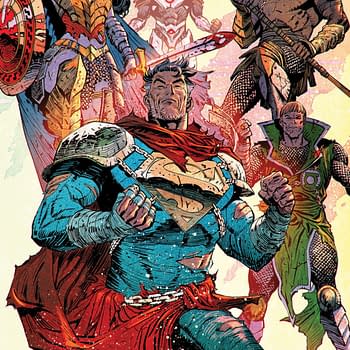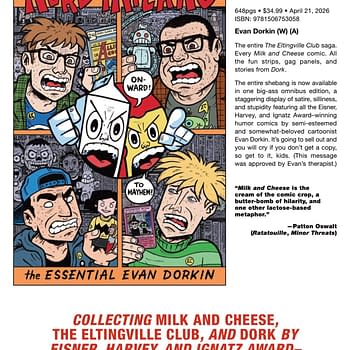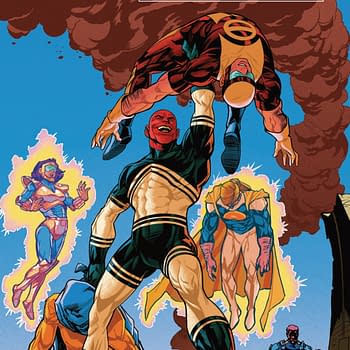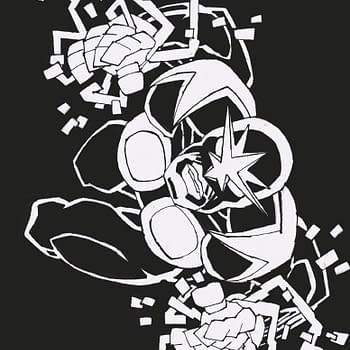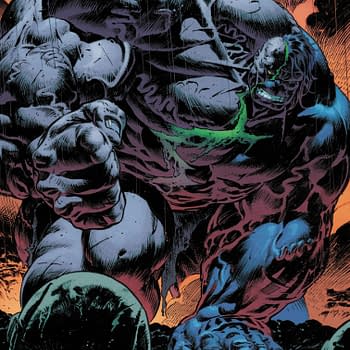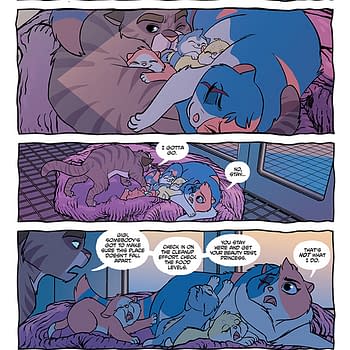Posted in: Comics, Recent Updates | Tagged: adi tantimedh, feminist, gonzo, Mystery, Red Girls
Red Girls: A Gonzo Feminist Generational Mystery – Look! It Moves! by Adi Tantimedh
Adi Tantimedh writes,

This is the story of three generations of women, beginning with Manyo, a baby originally found abandoned after World War II adopted by a labouring couple who eventually marries into the affluent Akakuchiba family and becomes their matriarch. What sets Manyo apart, other than her steel will, is her psychic powers. She helps steer the family's ironmonger business through the post-war boom years, becoming part of Japan's reconstruction.
The second part of the novel is about Manyo's daughter Kemari, who goes from teenage rebel to leader of biker gang in the 1980s before becoming a phenomenally successful manga artist.
The third section is about Kemari's daughter and Manyo's granddaughter Toko, who's also the narrator of the book. Toko is something of a nobody. No achievements to speak of, no mad antics as she came of age. What she's been given, though, is a secret: that Manyo murdered someone. Now Toko wants to find out who and why.
I'm sure there are other more highbrow and upmarket Japanese novels that cover a family's progress through history as a prism to examine the change times, but I doubt there are that many that are quite as nutty and entertaining. There's a kind of "throw everything but the kitchen sink" approach here, starting with Manyo being psychic and then it continues to go over the top from there. How many mainstream novels have a main character who's both the leader of a biker gang and a comics artist? Whose mother is psychic.
Somehow, only Japan would come up with this kind of story. And a feminist generational novel about the changing face of Japanese society as represented by its women. There's actually a literary convention in Asian fiction to have women symbolise the times and hardships of society, as seen in movies like Insect Woman, directed by Shohei Imamura, and Life of Oharu and Street of Shame directed by Kenji Mizoguch. Red Girls: The Legend of the Akakuchibas just happens to be the 21st Century postmodern version of that convention, after pop fiction like murder mysteries, B exploitation and Science Fiction have spent the last forty years infiltrating the psyche of Japan. Manyo is the face of the first post-war generation, enduring hardship to attain a success she has to fight to hold onto, including her family. She represents here Japan's post-war reconstruction and survival. Her daughter Kemuri represents the rebellion of the 1960s and violent dystopian 1970s in her gang years, drawing on juvenile girl gang movies of the period that starred Maiko Kaji, then onto the artistic opportunities of the boom years of the 1980s. The beaten-down and under-achieving Toko represents the post-crash era of the 1990s and early 21st Century where kids who grew up after the 80s bubble burst were confronted with less prosects and continue to face hopelessness and despair. That she ends up investigating Manyo's secrets and unearthing them is an allegory for the younger generation having to deal with the legacy of the older post-war generation and the dirty, shametul things they did to create a functioning society. The whole book, in the end, is Manyo's story, her presence felt through all three sections of the book, driving her daughter and granddaughter's stories, and it becomes one big allegory about Japan from the end of the Second World War to the present, covering the changing roles of women and the different identities each generation adopts are searches for as society changes through the times.
Red Girls won the Mystery Writers of Japan award in 2007 and author Kazuki Sakuraba has had plenty of practice writing hyperreal, high concept plots. She wrote the popular Light Novel (aka Young Adult) mystery series Gosick, its title a Japanese play on "gothic", which featured a teenage Japanese army officer who travels to Europe to become the sidekick of a mysterious girl genius detective in an alternate history 1920s Europe. Gosick has been successful enough to spawn a manga and anime spinoff. Red Girls is only one of the dozen or so mainstream novels she has written, and continues to write. Red Girls also has the general feel of generational sagas written by the likes of Gabriel Garcia Marquez and other Latin American authors in what critics used to call magical realist fiction, but here it's a more gonzo, postmodern Japanese flavour. Sakuraba is very comfortable writing in the space where the pop conventions of manga, anime, mystery and literature intersect, which is probably what makes Japanese pop fiction unique, and unique in the way it warps and blows your mind in new ways.
Red Girls: The Legend of the Akakuchibas is out available from Amazon.
Life is fiction at lookitmoves@gmail.com
Follow the official LOOK! IT MOVES! twitter feed at http://twitter.com/lookitmoves for thoughts and snark on media and pop culture, stuff for future columns and stuff I may never spend a whole column writing about.
Look! It Moves! © Adisakdi Tantimedh








